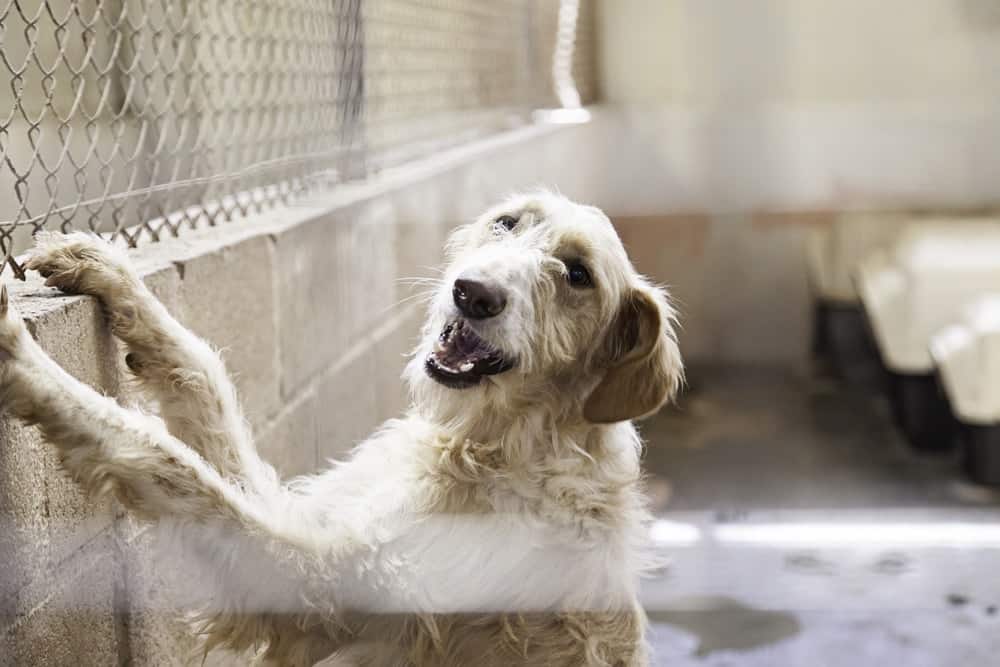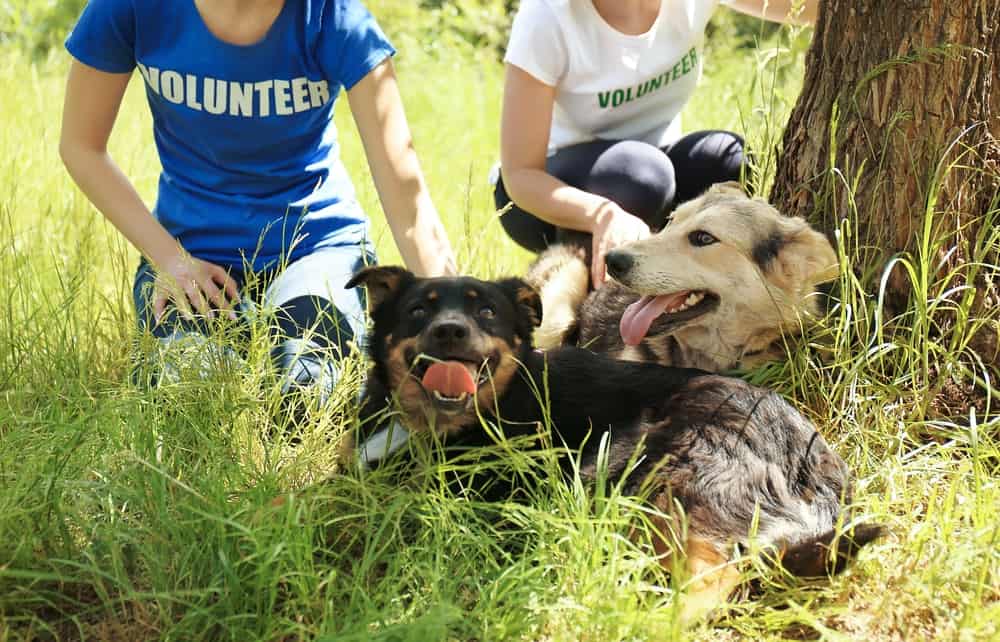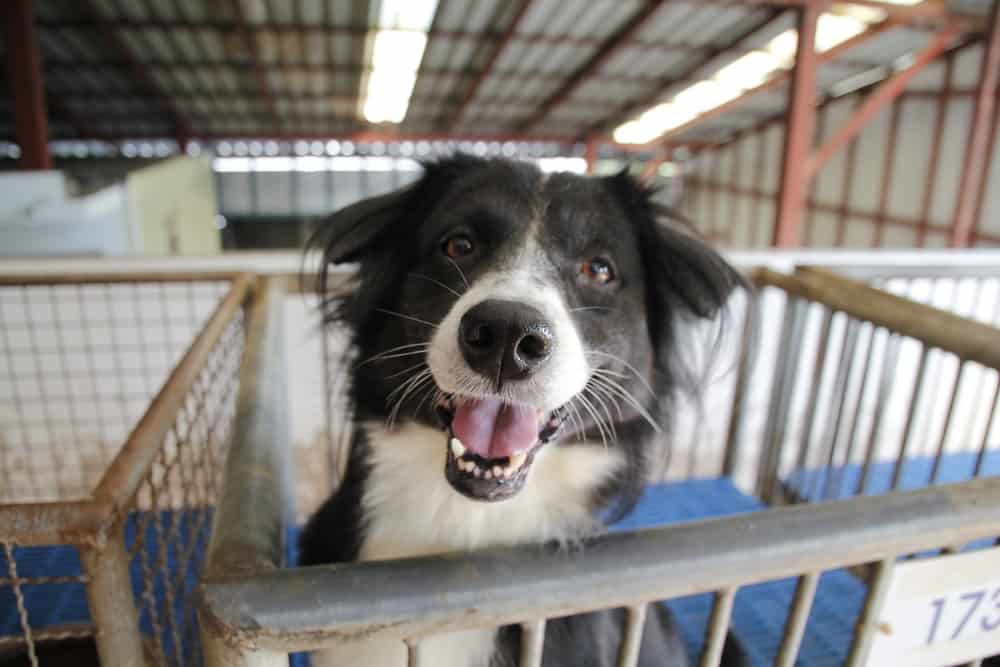“This post contains affiliate links, and I will be compensated if you make a purchase after clicking on my links.”
A vast majority of animal shelters and rescue organizations depend almost entirely on the generosity of donors and volunteers to do the amazing and important work they do in their own communities and beyond. As animal lovers, it’s only natural to want to help – but not everyone has the means to donate money. Don’t worry, even without a monetary donation, there are plenty of ways to help!

1. Volunteer
Arguably one of the most valuable, much needed ways to help shelters and rescues is to offer your time. Volunteers do everything from walking and feeding dogs, brushing and grooming animals, and cleaning kennels to answering phones, organizing events, and performing basic organizational duties.
Chances are, your own professional skills can be useful! Are you a web or graphic designer? Offer to help with your shelter’s website or graphics needs. Printers can donate printed materials like adoption forms, business cards, or flyers. Photographers may want to volunteer to photograph adoptable pets; veterinarians often volunteer services, like spay/neuter or vaccinations; attorneys can offer legal services; dog trainers can spend time with sheltered dogs, making them more easily adoptable – be creative!
Don’t forget, when donating your time performing a professional service, the value of your services is often tax deductible!

2. Gather Supplies
It’s a simple fact: all shelters and rescues will, at any given time, be in need of supplies. Consider all of the things you use at home when caring for your own pets when picking up or collecting supplies for the shelter. Of course, dog and cat food, treats, and toys are always welcomed, but think outside the box, too. Paper towels, blankets, pet beds, laundry soap, cleaning supplies, grooming supplies, litter, puppy pads, and collars and leashes are always in short supply at shelters.
Although it’s fun to shop for toys and treats knowing that a dog or cat will directly benefit, shelters and rescues need basic office supplies in order to function, too. Printer paper, pens, markers, file folders, and the like are all needed as well.
Consider planning a shelter supply donation drive and ask family, friends, and coworkers for support! Set up a collection bin at the office, create a wish list and ask friends and family to contribute, or talk to fellow dog lovers at the park, many will have extra beds, blankets, towels or supplies they’d be happy to donate to your cause. (Get your kids and their friends and classmates involved, too!)
3. Be a Good Pet Parent
It may seem silly at first, but think about why our shelters and rescues are so overcrowded. Ensure that your household pets are neutered or spayed and encourage your friends and neighbors to do the same. Unwanted litters result in thousands of dogs and cats ending up in shelters each year.
Enlist the help of a trainer or behaviorist with your own dogs. Thousands more pets are surrendered to shelters each year simply because of a lack of training. Ill-mannered dogs don’t set out to be problematic, they simply haven’t been taught the right way to behave.
Microchip your pets and don’t leave them unattended while outdoors. Only about 10% of all lost and stray dogs and cats picked up by animal control and shelters are ever recovered by their families. Microchipping your dog is the best way to ensure your dog is returned to you if he’s lost.
Finally, if someone you know mentions getting a pet, tell them about the great pets ready to be adopted at their local animal shelter and warn them against buying from a pet store, where puppies are almost always sourced from puppy mills.

4. Get Involved
Remember that you can almost always accomplish more by working with others. With that in mind, use your social media savvy to spread the word about adoptable dogs or shelters and rescues in need; organize a bake sale, car wash, or a raffle and ask local businesses to donate supplies; participate in fundraisers or special events held by your favorite shelter; even offer transportation to dogs and cats going to a new home or being moved to another shelter or rescue. Even sharing this Guide with fellow pet parents can help!
5. Talk to the Shelter/Rescue
There are countless ways to help your local shelter or rescue that don’t require either money or a long-term commitment of your time. Make a phone call to your favorite shelter, let them know what skills you have to offer, and find out exactly what they need.
Many shelters happily welcome visitors that are only there to spend time giving attention and comfort to dogs and cats. Putting together info packets for potential adopters from home in the evenings, performing minor repair jobs at the shelter, performing home checks, or evaluating foster home applications are just a few of the creative, but helpful, ways to help out.

6. Adopt a New Best Friend!
When you adopt an animal from a shelter, you’re actually saving two lives – the one you adopted and the one that can now take his or her place at the shelter, that would otherwise not have a place to go. Not only do adopters gain a new best friend, they are vital to keeping shelters and rescues in operation, allowing them to save more pets.
Do you have any other suggestions for helping out the local shelters? Weigh in with a comment below!



















Dee
Mar 14, 2018 at 5:55 pm
When you replace old sheets, towels, wash clothes, blankets etc. Donate the old ones to the shelter. They can always use them. If you are buying supplies, make sure you max your benefit by doing Buy One Get One offers (BOGO) especially for Paper Towels, Bleach, laundry soap and so on.